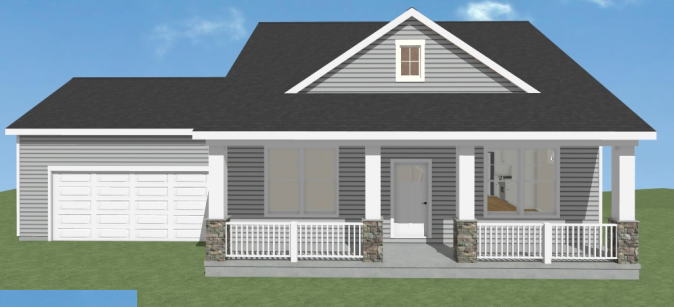Planning Agenda: 2023-11-09
UPDATE 2023-11-10: The stream is available on Youtube 👉here👈. The public comment for the 959 Bristol Ave NW development is 🔥lit🔥! 😑 The discussion at the end of the meeting related to the topic of reducing or eliminating residential parking minimums starts 👉here👈. Discussion of possible zoning ordinance changes related to finally substantively addressing the housing crisis occurs at the beginning of the meeting, is suspended for the scheduled hearings, and then resumes at the end of the meeting.
UPDATE 2023-11-01: The discussion of potential zoning reforms was not conducted at 👉the 2023-10-26 meeting👈 due to the length of the public hearings. That conversation was moved to the front of the agenda of this meeting.
The Planning Commission's agenda for 2023-11-09 is 👉here👈.
Potential Zoning Reforms
This conversation of potential zoning reforms is a continuation of a conversation from the 👉September 28th Planning Commission meeting👈. If you did not read 👉the preamble for the agenda of that meeting👈 I'd recommend it to understand the context of this discussion. The first conversation (Sept. 28th) covered accesory dwelling units (ADUs) and occupant limits, this one covers even hotter topics: infill development and group living requirements. All of these topics intersect with parking minimums as without a reform of the current ordinance's arbitrary parking requirements no other reforms will amount to much of anything in practice.
Aside: As I always ask - what is the difference between a duplex and an house with an ADU? Or a duplex with an ADU and a triplex? I don't know; neither does anyone else, as there isn't one. Urban Planning likes to have as many categories as possible?
Parking Minimums
Consider reducing or eliminating parking requirements in TN Neighborhoods.
"TN" this case means "Traditional", a denotation in the current zoning ordinance for areas of the city which were principally built out prior to the second world war. The neighborhoods, having been built prior to zoning and the regulatory preference given to the automobile, are generally somewhat denser than MCN (mid-century areas). The TN areas of the city are also some of the most desirable neighborhoods as many people like to live in interesting and active places - and not so much among asphalt parking lots.
Currently a 😇Single Family Home😇 is required to have two (2) parking spaces, a duplex three (3) parking spaces, and any residential structure with three or more units must have 1.5 parking spaces per unit plus 0.25 spaces for every bedroom more than a second bedroom. Thus a quadplex (4 units) of three one bedroom units and one three bedroom unit must have (1.54)+(1.0.25) = 6.25 parking spaces.
Some of the ideas proposed for consideration are: - "reduce or eliminate parking requirements for residential developments containing 6 or fewer units." - "Increase waiver distance for transit from 300ft to 0.5 mile (BRT) and 100ft to 0.25 mile (regular stop)"
The second point relates to the ability of developments to use the proximity to a public transportation stop to eliminate 50% of their parking requirement. The current ordinance's limit of 100ft is particularly ludicrous; that is not the length of a single block.
Aside: we will lay aside for the moment any debate of whether Grand Rapids has any BRT stops.
The point is clearly made that:
Failure to reduce or eliminate parking will negate the other proposed changes or necessitate acquisition of adjacent parcels and demolition of existing structures.
Yep.
Group Living Requirements
Single Room Occupancy homes (SROs) were a staple of American life and cities for generations. It is very likely that everyone reading this had grand parents and great grand parents who spent some period of their life living in an SRO. After the second world war America's ruling class decided the best approach to dealing with poor people was to displace them. SROs were outlawed across the nation. Where were people to go? Meh. They did not care.
Both the history and variety of SROs is fascinating. SROs provided a bottom wrung to the economic ladder; a safe and affordable first stop on the American Dream. Cities without SROs are cities where only those with the resources to jump straight to the second or third step can reap all the advantages of urban living.
- When America's Basic Housing Unit Was a Bed, Not a House, Bloomberg 2018-02-22
- The Hotel-Spirit, Slate 2022-07-17
- When No Landlord Will Rent to You, Where Do You Go?, NYT 2021-05-20
- SRO Housing, Nearly Zoned Out of Existence, Could Re-Emerge, Governing 2022-06-08
SROs come in a variety of types, and the city has the power to regulate those types distinctly. SROs range from market-rate room-for-rent residences to transitional shelters. Room-for-rent SROs are often referred to as "rooming houses" or "boarding houses".
Technically one can operate a room-for-rent SRO under the current ordinance with Special Land Use . . . good luck!. Several groups have tried. There are still those parking requirements; you need a huge lot. Huge lots within the TN areas of the city?
Some of the ideas proposed for consideration are:
- "Distinguish between small-, medium- and large-scale Group Living Uses"
- "Create tiered review process depending on the proposed number of residents"
- "Allow within LDR districts", presumably by-right. ???
- "Increase tenancy period" - which is how long people are allowed to stay; this is in reference to transitional shelters where currently a tenant at such a facility is only permitted to reside there for some number of months.
As you may be able to tell I have strong feelings about SROs - I recommend you read about them to understand why. ANYONE talking about housing, equity, affordability - - - all the Progressive buzz-words - - - who does not support the return of SROs as a vital component of American cities is not taking those topics seriously.
Infill Development (Missing Middle)
"Missing Middle" is a term for housing in between the duplex (or house+ADU) and the apartment building (whatever that means). It is something between two (2) and ~12 units. The upper end of the Middle is only vaguely defined. The important aspect of the Missing Middle is America stopped building it. This leaves American cities without a diversity of housing choices or a natural way for neighborhoods to evolve.
Aside: This problem is on purpose. The entire point of American Urban Planning has been to arrest evolution. The consequence of such an endevour is well understood my any JRR Tolkien fan. Preservation, inevitably, is decline. The world goes forward.
The current zoning ordinance inhibits the development of Missing Middle residential in myriad ways. First: parking requirements. Then set-backs, lot sizes, height limits, and process [Special Land Use for everything]. Building in a traditional neighborhood with small lots, alleys, and adjacent buildings is already challenging without a bureaucrat trying to come up with new challenges.
So, what's on the table:
- Spitting up the categories [yes, more categories]. Two (2) units, 3 - 6 units, and 7+ units?
- Pair by-right of up to 6 units on Link Residential and Network Residential streets.
- Eliminate lot widths requirements for developments up to 6 units.
- Eliminate parking requirements.
If you aren't familiar with the terms "Link Residential" or "Network Residential" these are categories of streets defined by the Grand Rapids' 👉Vital Streets👈 program. Every street in the city was categorized in 2016 and the City Commission adopted those categories in an effort to have a more consistent approach to transportation and land-use. As with most of the plans from the last decade there hasn't been much in the way of follow-through. The notion of linking development to Vital Streets categories was an idea that was raised in the 2018 Housing NOW efforts, at the time those conversations were squelched by the City Commission. It is encouraging to see this idea back again.
The document 👉here👈 contains a map of street categories and their definitions.
959 Bristol Ave NW
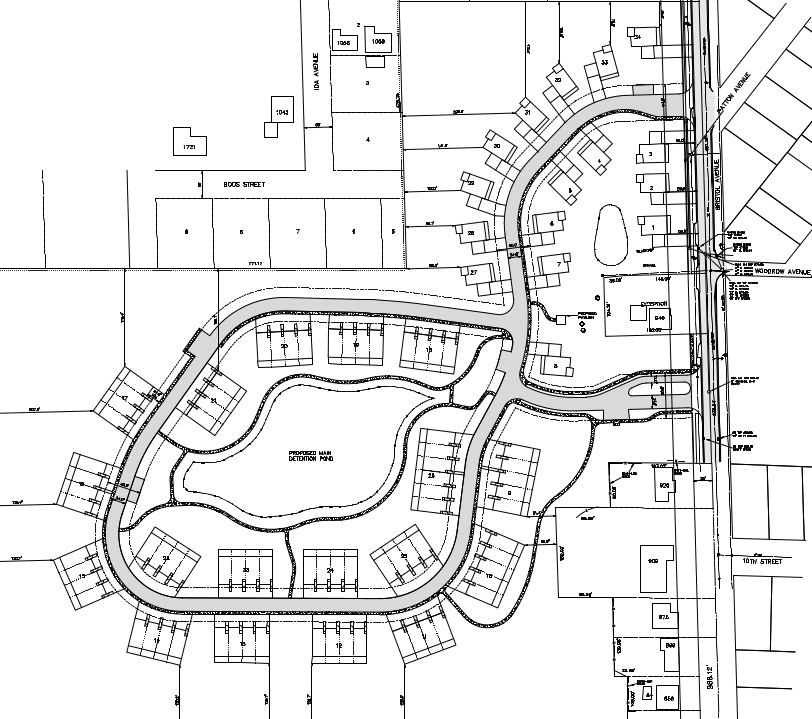
This is a request to create a Planned Redevelopment District (PRD) to allow the construction of a low density residential development on the site of an abandoned sand pit. The development is for a condominium community of both single unit detached and townhouse [attached] units. The previous use as a sand mine has created a site with steep grades and a depressed center - it also creates what will be a geographically isolated community on at least three sides. Also in response to the topography of the site a significant - described as "over built" - storm water management facility is included.
The development will include 16 single unit detached structures and 76 townhouses for a total of 88 for-sale residential units. All units provide parking and the parking is prominently visible from the street.
We've discussed Planned Redevelopment Districts (PRD) and Planned Urban Developments (PUDs) in the past. In the simplest terms they are a form of "spot zoning" where a larger development project can go to the city to essentially draft their own customized zoning district. The Planning Commission will determine if that request is harmonious with the adjacent land-use and goals of the Master Plan. This low-density over-parked suburban type of development appears, at least superficially, to be an straight-forward fit relative the surrounding area.
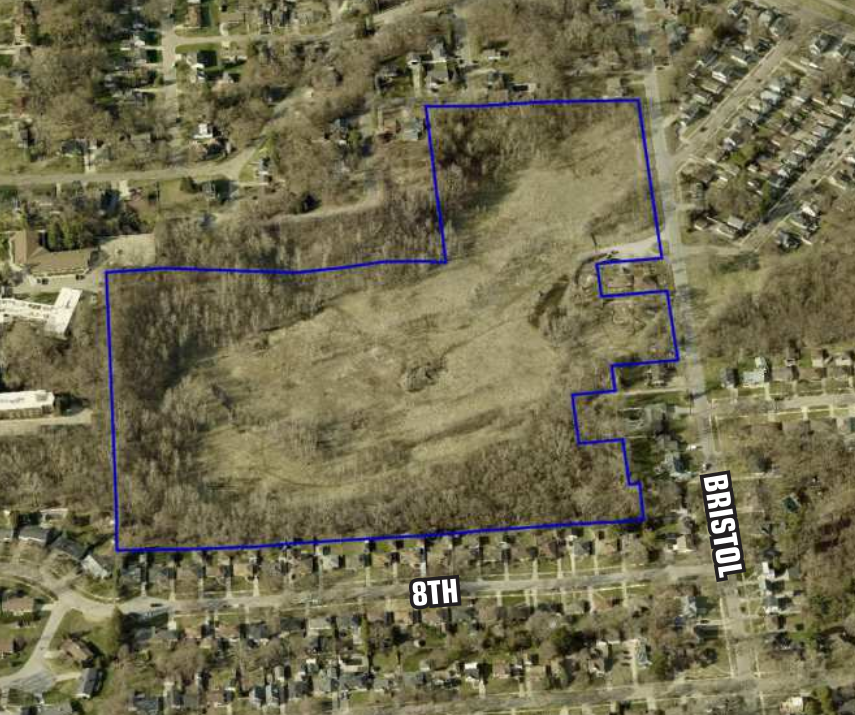 |
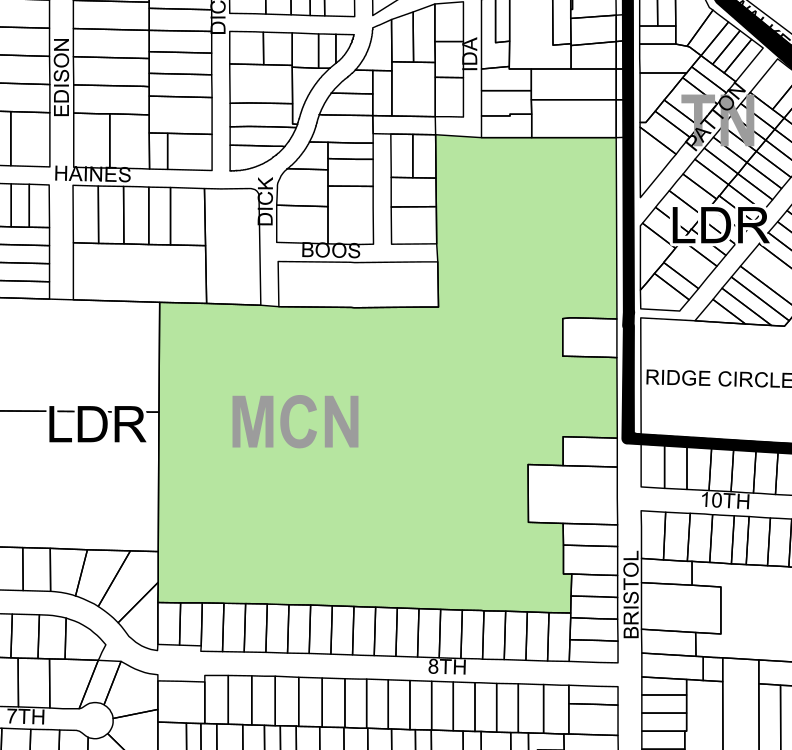 |

RELATED:
- City board advances 92-unit housing project at former mine despite neighbor opposition, Crains 2023-11-10
2000 Lake Michigan Dr. NW
This request is really a dive in the swamp of arbitrary which is Zoning. The owner is peitioning to have the zoning of the property changed from NOS (Neighborhood Office Services) to Mid-Century Neighborhood Commercial (MCN-C). What? Yeah. The properties immediately to the west are zoned Commercial (C) while the two parcels to the south are zoned Office (NOS) - there is a zone of only eight properties. If this parcel is rezoned it will split the Office zone into two NOS zones: one of two properties, and one of five properties.
Why change from NOS to C? Because retail is not permitted in the NOS zone, but is allowed in the C zone. The owner intends to operate two small retail operations on the site, repurposing a previous bank building and the construction of a new commercial building. This requires a rezoning, a request which will proceed from the Planning Commission to the City Commission.
The site it located directly adjacent to Laker Line BRT stations.
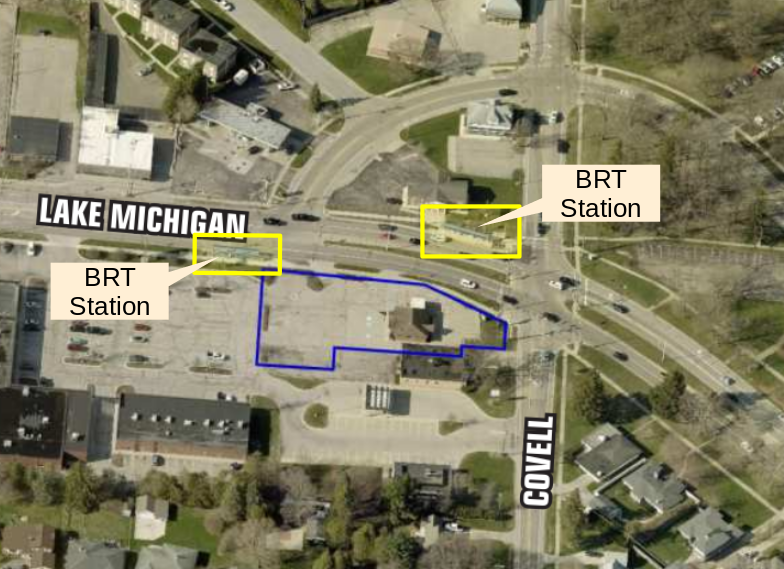 |
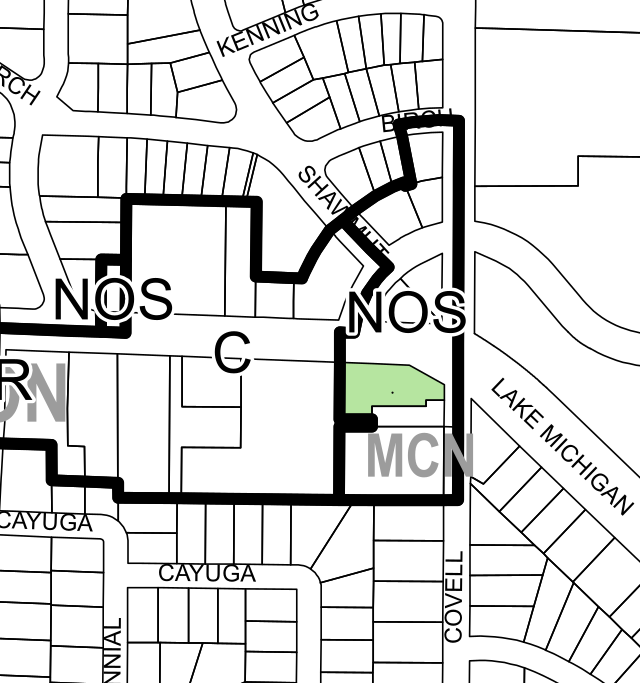 |
1555 aka 1551 Wealthy St SE
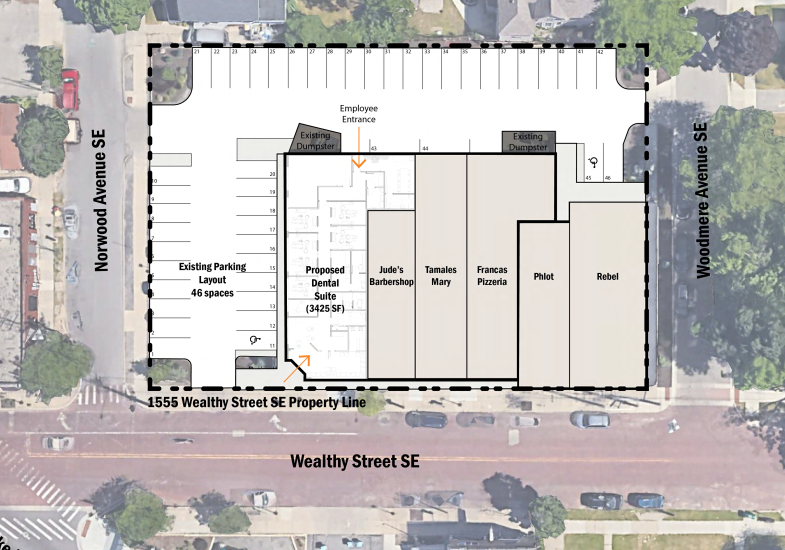
This is a request for a Special Land Use (SLU) in order to operate a dental practice in this facility which is in a Traditional Business Area (TBA) zone. Operation of a dental practice on the ground floor of a structure within Traditional Business Area is a special use; it would be a by-right use if it were on the second floor. You can find the by-right, special, and forbidden uses for the different types of business districts in 👉"Table 5.6.06.B. Uses: Mixed-Use Commercial Zone Districts of the zoning ordinance"👈; it is five pages long.
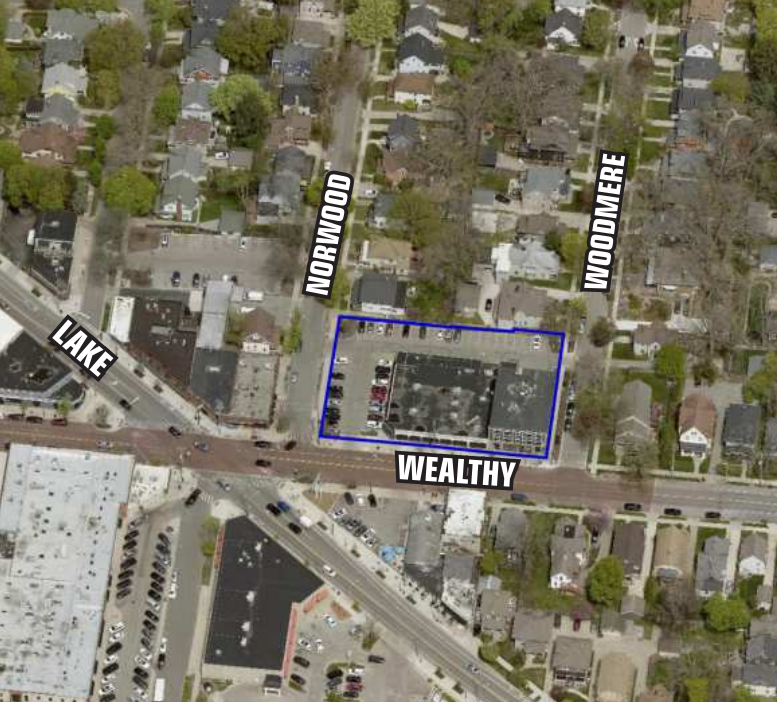 |
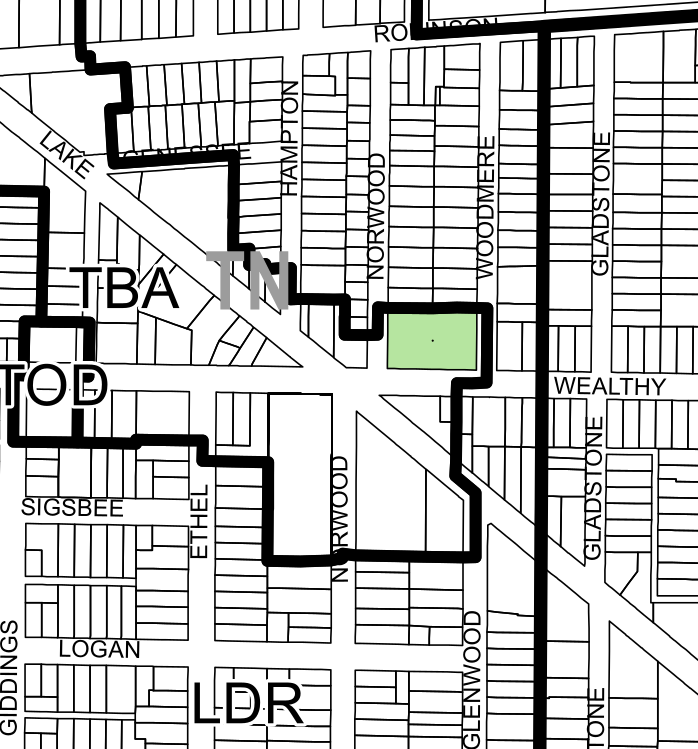 |
3300 Burton St. SE
UPDATE 2024-08-02: Project page at Integrated Architecture
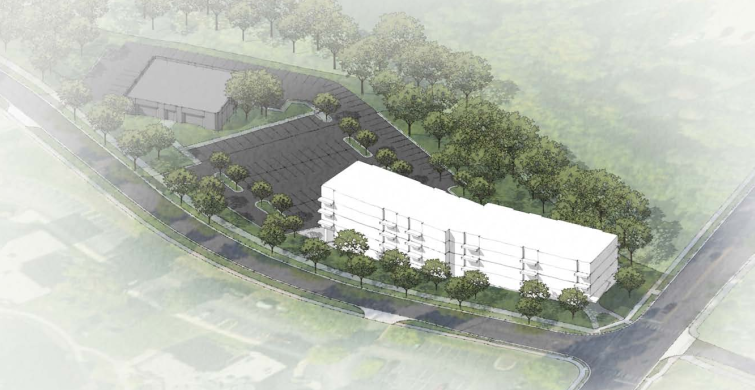
This is another rezoning request; also from Neighborhood Office (NOS), but this time to Special District - Institutional Campus (SD-IT). The applicant is Calvin Theological Seminary. The Neighborhood Office (NOS) zone has significant height restrictions where a structure in an Institutional Campus zone can be four stories. Calvin Theological Seminary wants to build a forty eight (48) unit residential structure. They intend to provide seventy nine (79) parking space with an on-site surface parking lot; which is 1.6 parking spaces per unit. Due to available public transportation and other available deductions the site is - pragmatically - only required to provide forty (40) parking spaces.
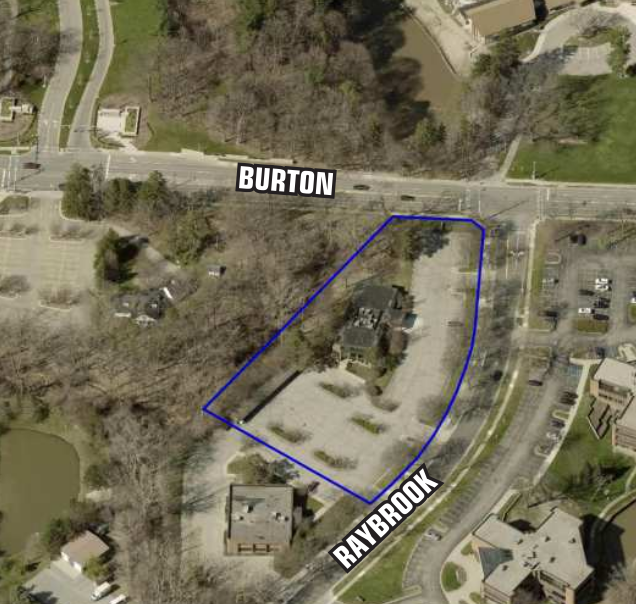 |
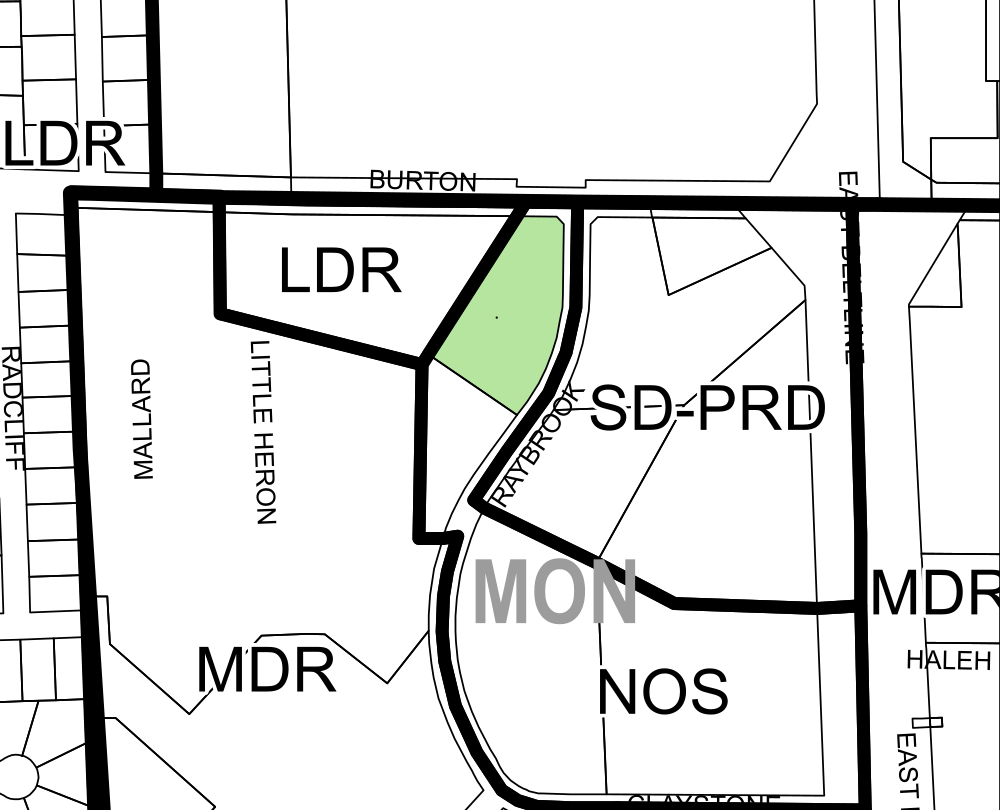 |
RELATED:
- Calvin Theological Seminary eyes student housing at nearby office building, Crains 2023-11-17
125 Cottage Grove St. SE
This is a Special Land Use (SLU) request to use an currently vacant property which was previously a bus repair facility as storage and stating for United Rentals Reliable Onsite Services Division (ROS). ROS rents portable toilet, toilet/shower combination, trailers, stand‐alone hand wash stations, and temporary security fencing. This use is a special use in Special District-Industrial Transportation (SD-IT) zones. All surrounding properties are also zoned SD-IT. The property is not adjacent to any residential use.
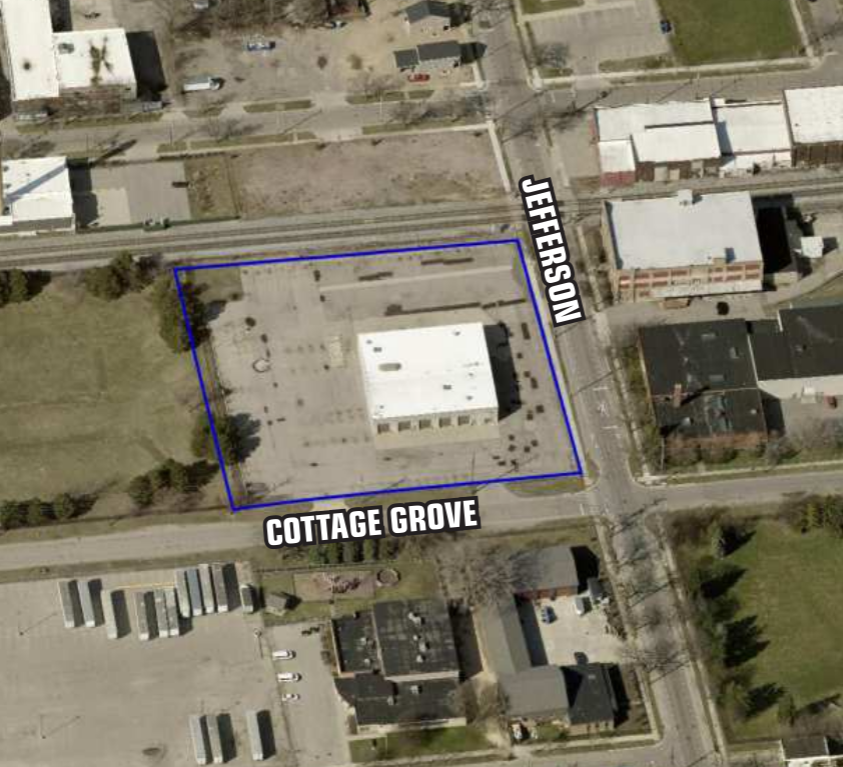 |
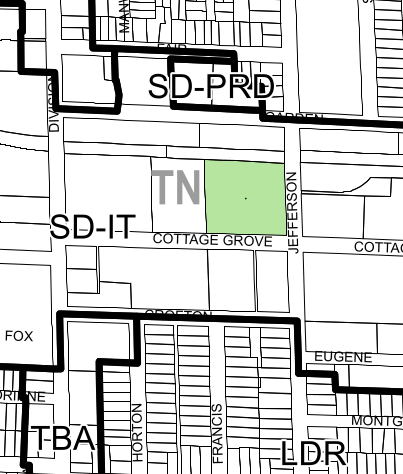 |
415 Adams St. SE
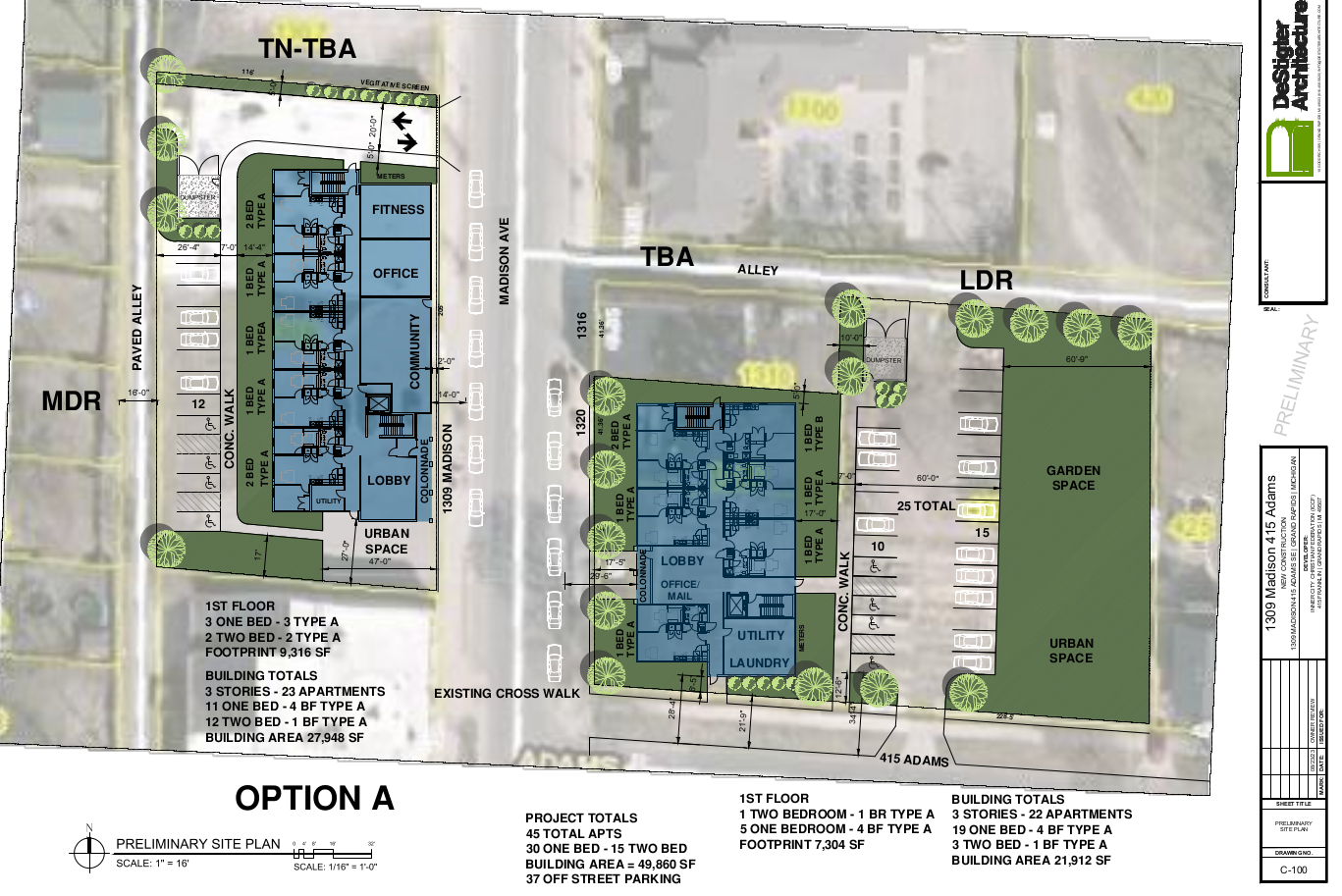
ICCF is requesting Special Land Use (SLU) to construct a surface parking lot with a single-family zoned district (TN/LDR). Surface parking lots within a residential area are a special use. The site is currently vacant. The lot is intended for use by residents of the adjacent 45 unit residential development at 1309 and 1320 Madison Ave. In combination with 1309 & 1230 Madison Ave this development will provide 37 spaces; 1.2 spaces per unit. ICCF also requires a waiver to reduce the parking requirement of the development. Due to Affordability and nearby public transportation service - the Rapid route #1 - being granted the waiver seems very likely based on precedent.
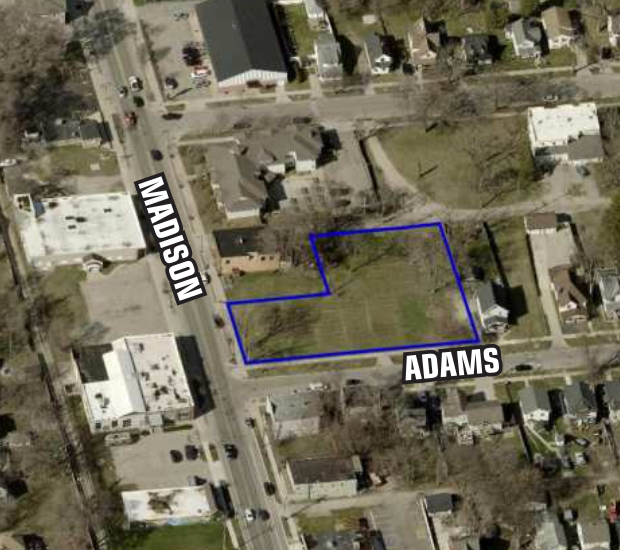 |
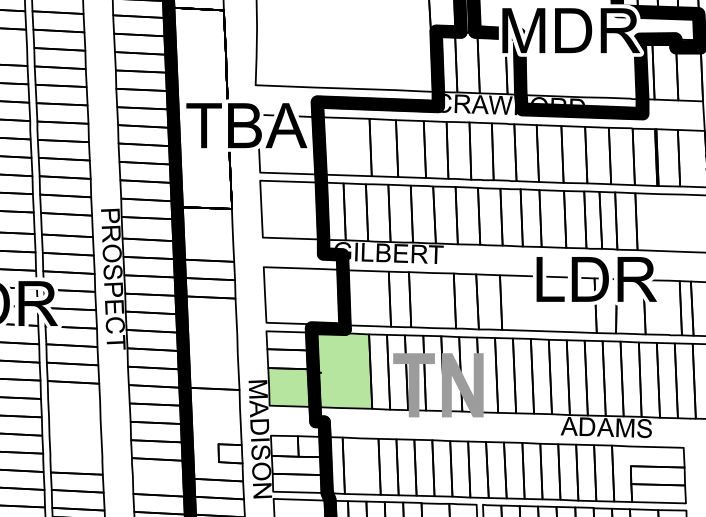 |
RELATED:
- Nonprofit developer eyes vacant Grand Rapids properties for 45 apartments, Crains 2023-11-03

